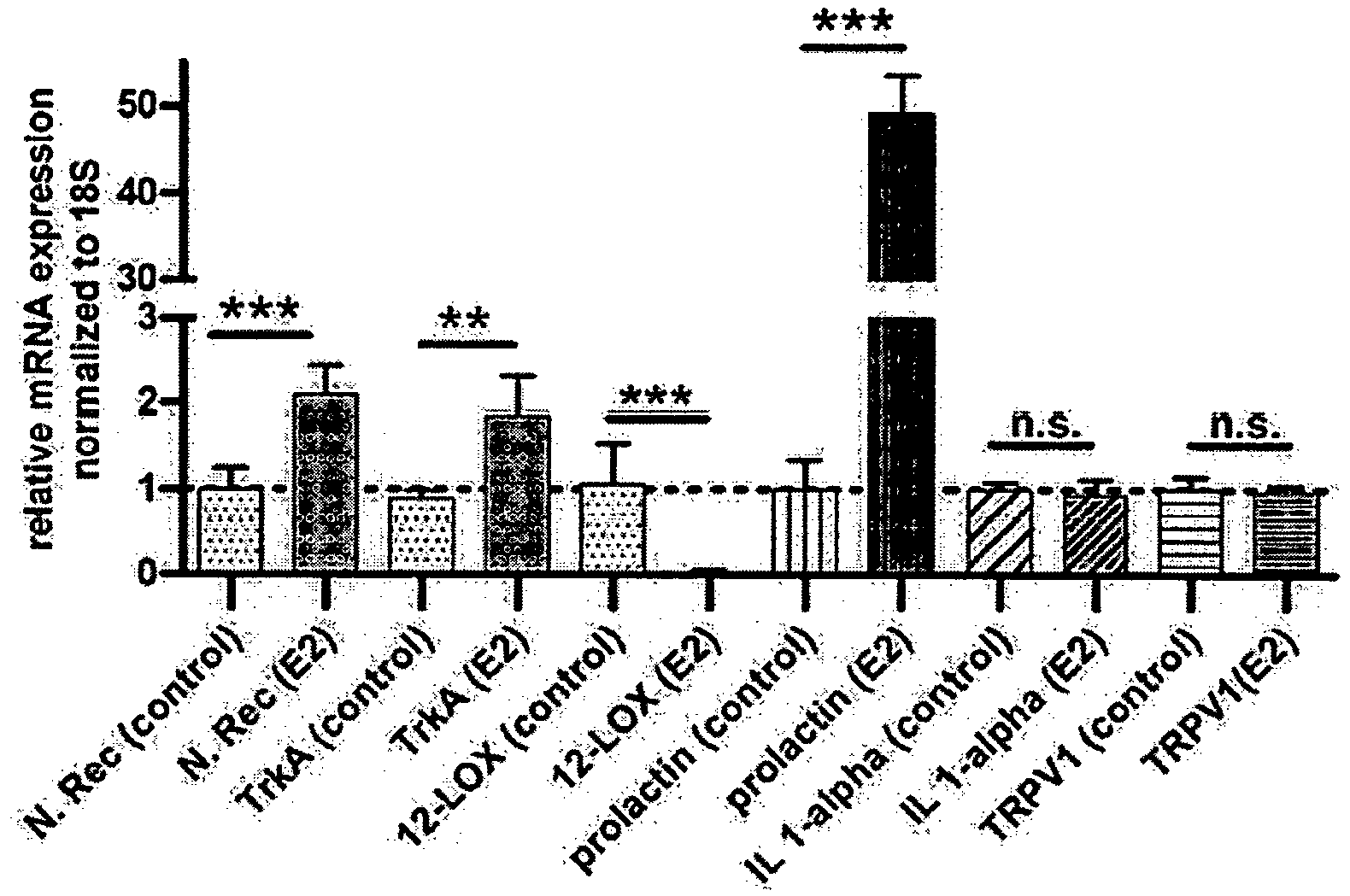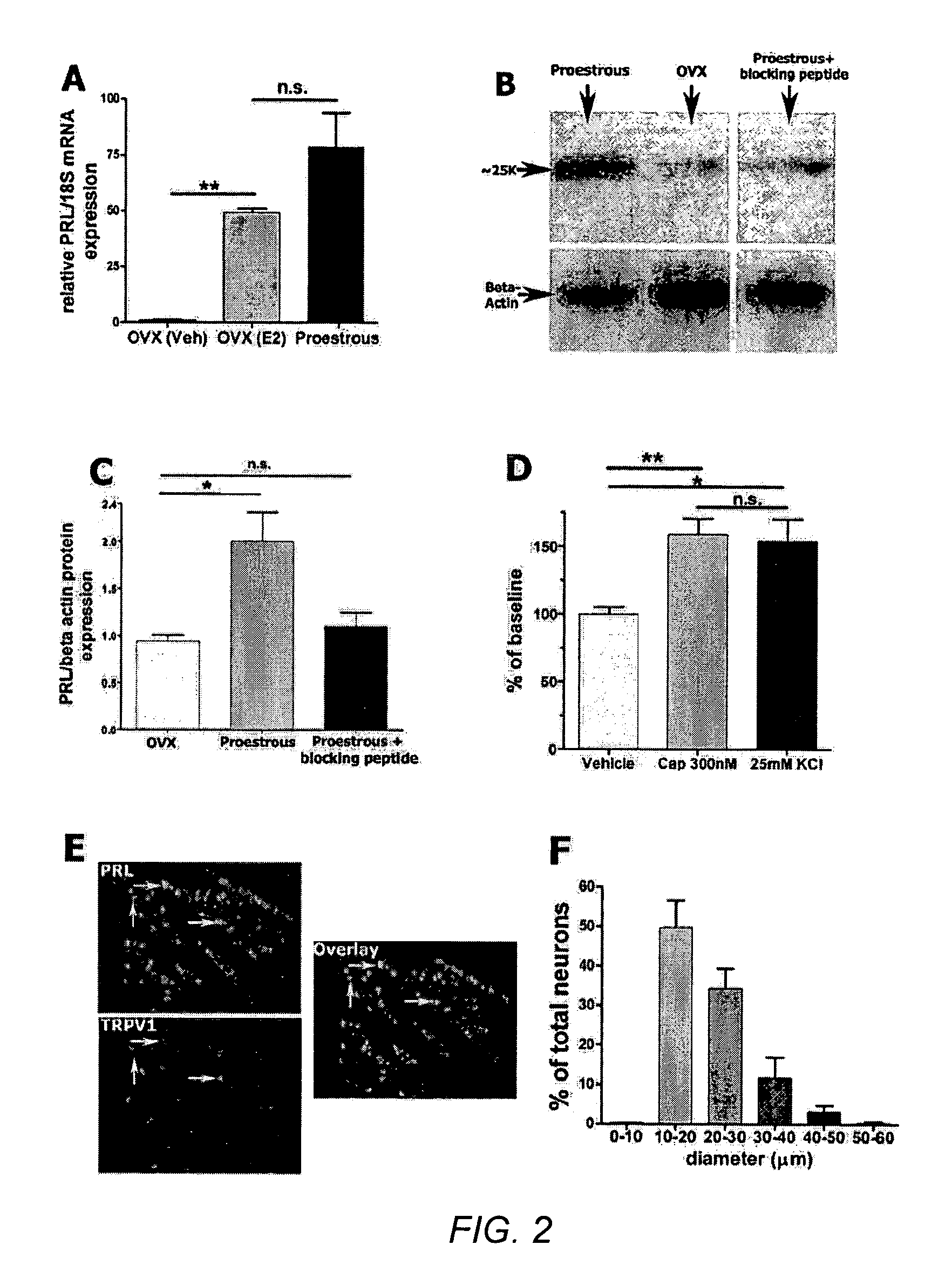Method for treating pain with prolactin antagonists
a technology of prolactin and antagonists, applied in the field of therapeutics, can solve the problems of reducing the behavioral response of neuropathic pain in humans, inflammatory injury in rats, and many responsiveness, and achieving the effect of reducing the behavioral response of capsaicin desensitization procedures
- Summary
- Abstract
- Description
- Claims
- Application Information
AI Technical Summary
Benefits of technology
Problems solved by technology
Method used
Image
Examples
example 1
[0215]As was discussed above and depicted in FIG. 4C, application of the full PRL-R antagonist 1-9-Δ-G129R-hPRL significantly blocked the ability of PRL to sennsitize capsaicin-evoked Ca2+ influx. Since it is possible that this effect is observed only in full PRL-R antagonists, it is of interest to determine the effectiveness of partial PRL-R antagonists in blocking PRL-mediated nociceptor sensitization. To this end, the ability of the partial PRL agonist (G129R-PRL) to inhibit PRL-induced increase in sensitivity to capsaicin was assessed. FIG. 10 summarizes the effect of administering PRL, human G129R-PRL, or their combination, on Icap. G129R-PRL acts as either a partial or full antagonist, depending on the cellular context of the experimental system (Goffin, Bernichtein et al. 2003). Co-application of G129R-PRL 16 nM with rPRL 4 nM reduced the PRL effect by about 40% and this effect was observed in 6 of 7 examined neurons. Moreover, application of G129R PRL in the absence of rPRL ...
example 2
[0217]Turing now to FIG. 11, it can be seen that recombinant human PRL (rhPRL) is able to sensitize cultured neurons isolated from male and female TG neurons, and the magnitude of the response evoked by stimulating the neurons with 100 mM capsaicin is proportional to the concentration of rhPRL applied to the neurons. FIG. 11 A shows the effect on normalized Icap evoked by 100 nM capsaicin of exposing cultured TG neurons from OVX female (diamonds), normal female (square) and male (circle) rats to varying concentrations of recombinant human PRL (rhPRL). FIG. 11B summarizes the effect of adding rhPRL on Icap of cultured TG neurons from male, female and OVX female rats. Number of recorded neurons and neurons in which effects were observed are indicated above the bars. The recordings were performed in whole-cell voltage clamp c(Vh=−60 mV) configuration. Solutions are SES and SIS. It should be noted however, that while both male and female neurons exhibit dose-dependent increases in Icap ...
PUM
| Property | Measurement | Unit |
|---|---|---|
| molecular weight | aaaaa | aaaaa |
| diameter | aaaaa | aaaaa |
| diameter | aaaaa | aaaaa |
Abstract
Description
Claims
Application Information
 Login to View More
Login to View More - R&D
- Intellectual Property
- Life Sciences
- Materials
- Tech Scout
- Unparalleled Data Quality
- Higher Quality Content
- 60% Fewer Hallucinations
Browse by: Latest US Patents, China's latest patents, Technical Efficacy Thesaurus, Application Domain, Technology Topic, Popular Technical Reports.
© 2025 PatSnap. All rights reserved.Legal|Privacy policy|Modern Slavery Act Transparency Statement|Sitemap|About US| Contact US: help@patsnap.com



